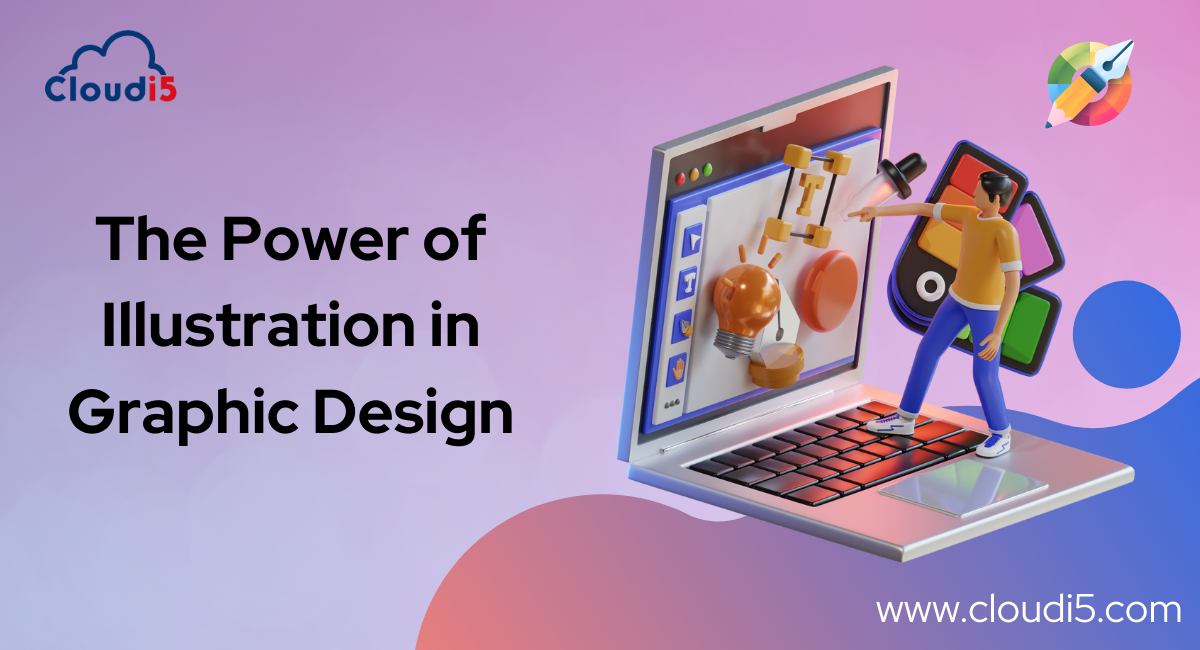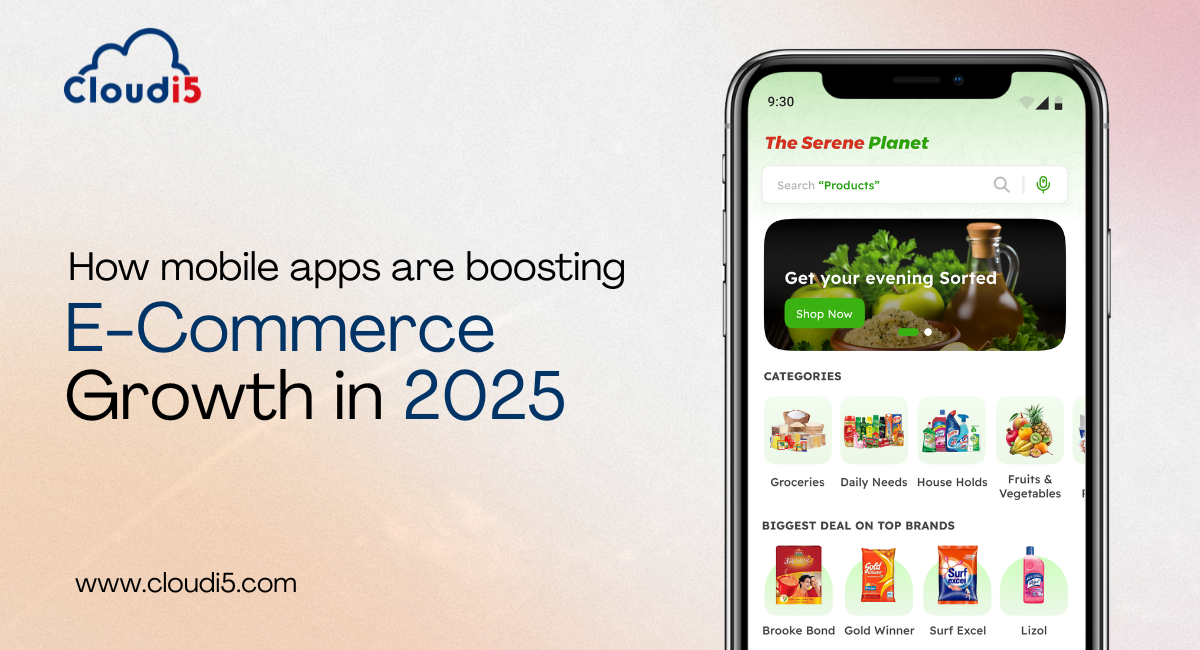
The Power Of Illustration In Graphic Design
Welcome to the colorful world where imagination dances with purpose! Illustrations are more than just pictures in graphic design; they are magicians, storytellers, and brand ambassadors. They can awaken feelings, deliver ideas, and transform ordinary ideas into captivating visual narratives.
Graphic design plays a fundamental roles in a web design company, contributing significantly to website visual appeal, user experience, and overall effectiveness.
Join us for an exciting journey into the powerful field where images can change people's views and leave a lasting impression on the design canvas.
The Art of Visual Storytelling:
Illustrations form the beating heart of storytelling in graphic design; they serve as the enthralling visual thread that connects stories. With a glance, they gracefully convey concepts, feelings, and minute details beyond the reach of language. They act as catalysts, breaking complex subjects into easily understood visual components and leading spectators on a trip where interpretation and imagination collide. In graphic design, illustrations serve as more than just decorative elements; they are the storytellers who create universally relatable and cross-cultural narratives.
Here are some instances of compelling visual storytelling in graphic design using illustrations in various media.
Editorial Designs:
Magazine Spreads and Covers: Periodicals such as The New Yorker and TIME frequently have visually striking covers that capture the essence of the issue's theme or lead story. Readers are drawn in by captivating images, which also establish the tone of the material.
Digital Designs:
Website illustrations and Infographics: To present complicated information visually appealingly, websites frequently use infographics and bespoke graphics. Businesses with interfaces like Dropbox or Slack make routine chores more fun by incorporating playful, educational images.
The best ways to design a website using graphic design involves a thoughtful approach that integrates visual elements, user experience principles, and branding.
Motion Graphics and Animations:
Product Packaging Illustrations: Quirky and colourful graphics are used on product packaging by companies like Innocent Drinks. These graphics communicate the brand's beliefs and personality and draw attention to themselves on store shelves.
Advertising Campaigns:
Social Media Advertisements: Advertisers who use eye-catching graphics in their social media marketing include Spotify and Airbnb. These images efficiently advertise their services, evoke feelings, and tell stories.
Event Posters and Promotional Materials:
Concert or festival Posters: Event posters are usually made visually appealing by including illustrations. These images lure viewers in and convey the spirit of the occasion.
Through their visual storylines, illustrations in graphic design serve as potent storytelling tools in each of these media, capturing audiences' attention, delivering messages, and making a lasting impression.
Illustrations in Branding and marketing:
Drawings are powerful tools for creating and maintaining brand identities, and they significantly impact how consumers view a company. Illustrations from a brand's visual face communicate its essence, values, and personality by blending visual elements with unique artistic techniques, colours, and characters. When illustrations are used consistently throughout a range of touchpoints, including digital content, packaging, marketing materials, and logos, a unified visual language is created that sets the brand apart from its rivals.
Through illustrations, brands develop a distinctive and long-lasting presence in the competitive landscape by telling stories and creating visual identities that connect with their target audience.
Illustration styles and techniques:
Because of their adaptability, they can be seamlessly integrated into various marketing channels, from digital platforms and social media to packaging and advertising materials, guaranteeing consistency and enhancing brand identification. In summary, illustrations play the role of visual anchors in Branding and marketing, creating a lasting impression on customers and helping to establish a closer relationship between the company and them. The dynamic core of graphic design comprises illustration styles and techniques, which provide a wide range of creative expressions and instruments for visual storytelling.
Designers use a variety of styles, each having its distinct visual language and aesthetic, including surrealism, abstraction, realism, and minimalism. In graphic design, methods are frequently used to generate vector-based illustrations for accuracy and scalability, raster-based for intricate and textured artwork, or a combination of both to produce genuinely notable mixed media works. While infographic illustrations condense complex information into readable, aesthetically pleasing graphics, typography illustrations blend text and visuals smoothly. These styles and techniques are highly versatile and contribute to the depth and character of designs and successfully communicating messages, eliciting emotions, and creating distinctive brand identities. To develop hybrid styles that push the boundaries of visual narrative and contribute to the dynamic growth of illustration in graphic design, artists commonly experiment with the fusion of various approaches.
Illustrations in user experience design:
As practical visual components that inform, direct, and captivate people, illustrations are essential to improving user experience (UX) design. In user experience design, graphics are deliberately employed to help with navigation, make complex information more accessible, and produce an intuitive user experience.
They give interfaces vitality and turn routine interactions into enjoyable ones. Illustrations provide personality and warmth to everything from error messages to onboarding procedures, making encounters more relatable and human-centred. Additionally, images aid in creating a unified visual language, enhance brand identity, and establish the user experience's general mood. Their capacity to evoke feelings offers context and support narratives that enable consumers to engage more deeply with the product or service, building a sense of familiarity and trust. Illustrations continue to play a crucial role in UX design as user-centric techniques gain traction. They help create digital experiences that are memorable, visually appealing, and easy to use.
The Future of illustrations in graphic design:
Graphic design illustrations' Future is a blank canvas full of endless possibilities, standing at the nexus of traditional craftsmanship with cutting-edge technology. Graphic design illustrations' Future is a blank canvas full of endless possibilities, standing at the nexus of conventional craftsmanship with advanced technology.
The field of graphics is expected to grow and diversify as long as technology breakthroughs continue to occur quickly. Designers will investigate novel approaches to combining established methods with recently developed digital tools, promoting a vibrant fusion of artistic mediums. AI-driven design tools have the potential to expedite the creative process, opening up new creative possibilities and letting artists try out untested aesthetics.
In addition, images that embrace inclusivity and represent a range of voices, cultures, and viewpoints will be seen in the future landscape. Illustrations in graphic design are expected to veer toward themes supporting social change and environmental awareness as sustainability and consciousness become essential. Pictures will go beyond flat surfaces and immerse viewers in interactive and immersive visual experiences as virtual and augmented reality become popular.
Graphic Design Programs:
There are several graphic design programs, each with unique features and functionalities suited to varied skill levels and design requirements. There are various vivid design examples. Among the most well-liked graphic design courses are the following:
Sketch: Sketch is well recognized for its user-friendly interface, vector-based design tools, and prototype capabilities. It is mainly used for UI/UX design.
Figma: A web-based design tool called Figma is appropriate for teamwork when working on UI/UX design projects. It makes prototyping and collaboration possible in real-time.
Affinity Designer: Like Adobe Illustrator, this program provides a feature-rich vector graphics editor emphasizing cost and efficiency.
Canva: Canva is a user-friendly interface featuring templates for various design needs, including social networking graphics, presentations, and more. It is aimed towards novices and non-designers.
Procreate: a well-liked iPad app with strong painting and drawing features among illustrators and digital artists.
Individual tastes, project objectives, and software expertise frequently influence the selection of a graphic design application. Many designers combine many of these programs to complete the tasks at hand.
Conclusion:
In summary, there is no denying the significant and far-reaching influence of illustrations in graphic design. Pictures are more than just pictures; they are the heart of a tale, quickly cutting across linguistic and cultural barriers. Their importance in conveying messages, forming brand identities, and boosting the overall visual appeal of designs is highlighted by their capacity to arouse emotions, simplify complexity, and deeply engage audiences. Illustrations are like sparks that give stories life; they take ideas and turn them into vivid, relatable pictures that draw in and connect with audiences. Illustrations' continued dominance as timeless assets that promote connections and propel powerful storytelling in the varied and dynamic field of visual communication is evidence of their continuing importance.
Trusted By












Leave Comments